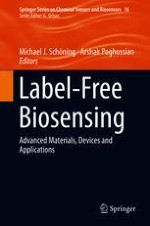2018 | OriginalPaper | Buchkapitel
Heat Transfer as a New Sensing Technique for the Label-Free Detection of Biomolecules
verfasst von : Kasper Eersels, Bart van Grinsven, Marloes Peeters, Thomas J. Cleij, Patrick Wagner
Erschienen in: Label-Free Biosensing
Aktivieren Sie unsere intelligente Suche, um passende Fachinhalte oder Patente zu finden.
Wählen Sie Textabschnitte aus um mit Künstlicher Intelligenz passenden Patente zu finden. powered by
Markieren Sie Textabschnitte, um KI-gestützt weitere passende Inhalte zu finden. powered by
